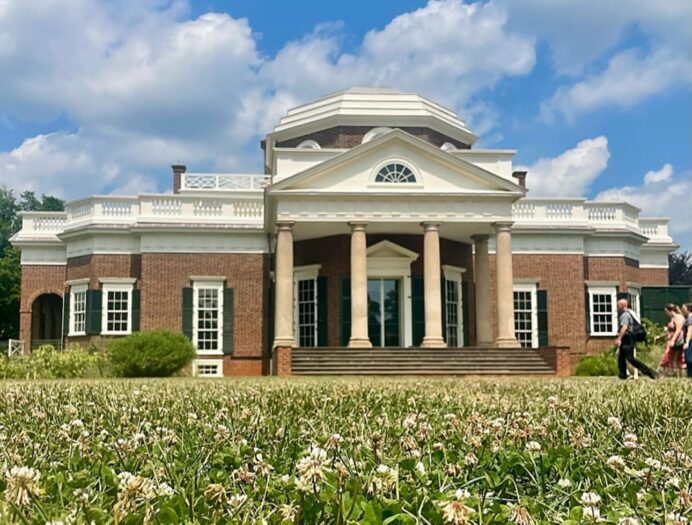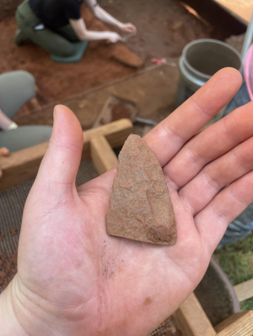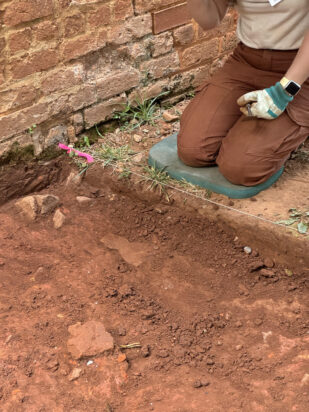Archaeology Blog
2024 Field School Week 3 (Part One)
By: Sarah Robinson and Colin Winner
The beginning of this week saw the fourteen field school students arrive at Thomas Jefferson’s Monticello early Monday morning. After a lecture on geoarchaeology and the importance of chemical analysis in analyzing soil stratification, the students took a walk down Monticello’s beautiful wooded trails to find the current Monticello archeology field school students hard at work at Site 30 – a site that includes previous dwellings of enslaved people as well as lithics (Native American stone tools, projectile points, etc.). The two field schools had a chance to briefly meet and talk about their parallel experiences and Thomas Jefferson’s plantations.
In the afternoon, the Poplar Forest students were given a “behind the scenes” tour of the Monticello house. Many students noted the similarities and differences between the architecture in Jefferson’s two homes. After the tour, our students walked down to the Monticello archaeology lab and met the archaeological analysts and DAACS (Digital Archaeological Archive of Comparative Slavery) employees to discuss the archaeology of slavery on the plantation. Finally, the Poplar Forest staff and students had the opportunity to take time to explore the grounds on their own and join tours, ask questions, or just take in the beautiful view of the Blue Ridge mountains before heading home.
By June 18th, the students had returned to the 1857 Slave Dwelling at Poplar Forest, where the finds just kept coming in! One group of students found a broken projectile point that is of Native American origin, and another unit found a small bit of metal that could have been the end bit of a parasol. Perhaps even more exciting, a third group unearthed some animal bones which we are very excited to study further! Lastly, we found plenty of glass, ceramics, and nails across all units, which have all been very exciting to see as we learn about the specifics of what we’re finding in our morning lectures.
On Juneteenth, we welcomed visitors from Monticello’s Historic Landscape Institute, and were eager to share what we had learned in our respective excavation units. One group of our students braved the rising heat of the summer in the field, while the other bunkered down and learned more about lab work. Later this week, the roles will be reversed, and we will all get a chance to learn about the “behind the scenes” work that goes into preserving these artifacts and sites. After an educational trip to Monticello and a promising start to the dig at Poplar Forest, this week is shaping up to be a great one for the field school!


